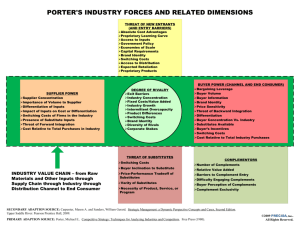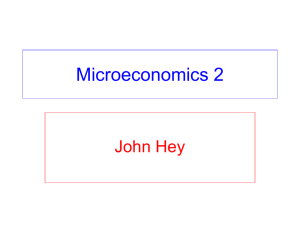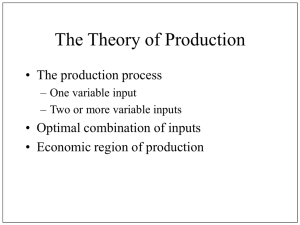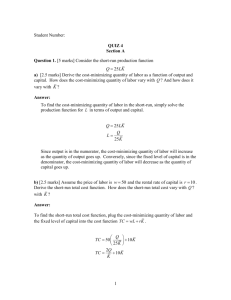Quiz4
advertisement
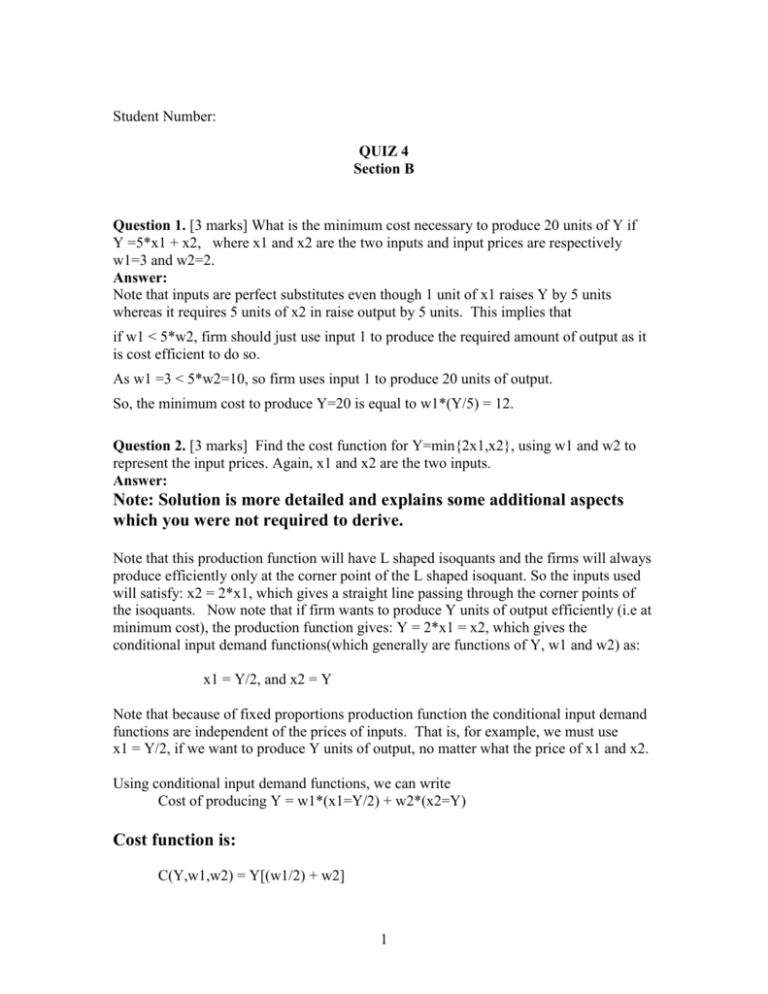
Student Number:
QUIZ 4
Section B
Question 1. [3 marks] What is the minimum cost necessary to produce 20 units of Y if
Y =5*x1 + x2, where x1 and x2 are the two inputs and input prices are respectively
w1=3 and w2=2.
Answer:
Note that inputs are perfect substitutes even though 1 unit of x1 raises Y by 5 units
whereas it requires 5 units of x2 in raise output by 5 units. This implies that
if w1 < 5*w2, firm should just use input 1 to produce the required amount of output as it
is cost efficient to do so.
As w1 =3 < 5*w2=10, so firm uses input 1 to produce 20 units of output.
So, the minimum cost to produce Y=20 is equal to w1*(Y/5) = 12.
Question 2. [3 marks] Find the cost function for Y=min{2x1,x2}, using w1 and w2 to
represent the input prices. Again, x1 and x2 are the two inputs.
Answer:
Note: Solution is more detailed and explains some additional aspects
which you were not required to derive.
Note that this production function will have L shaped isoquants and the firms will always
produce efficiently only at the corner point of the L shaped isoquant. So the inputs used
will satisfy: x2 = 2*x1, which gives a straight line passing through the corner points of
the isoquants. Now note that if firm wants to produce Y units of output efficiently (i.e at
minimum cost), the production function gives: Y = 2*x1 = x2, which gives the
conditional input demand functions(which generally are functions of Y, w1 and w2) as:
x1 = Y/2, and x2 = Y
Note that because of fixed proportions production function the conditional input demand
functions are independent of the prices of inputs. That is, for example, we must use
x1 = Y/2, if we want to produce Y units of output, no matter what the price of x1 and x2.
Using conditional input demand functions, we can write
Cost of producing Y = w1*(x1=Y/2) + w2*(x2=Y)
Cost function is:
C(Y,w1,w2) = Y[(w1/2) + w2]
1
Question 3. [4 marks] Consider the production function Y X 10.5 X 2 0.75 .
a) [1 mark]What are the returns to scale for this production function? (no proof
required).
Answer:
If inputs increase ‘a’ times, (for a>1), output increases by a^1.25 i.e. production function
exhibits increasing returns to scale.
So the ‘degree’ of returns to scale is 1.25.
b) [1 mark] Write out the short run production function for the situation where X 1 is
fixed at 100 units.
Answer:
Y 10 * X 2 0.75
c) [2 mark] What is the first order condition to maximize profits for the firm in the short
run?
Answer:
The condition is: P*(MP w.r.t X2) = w2
15 0.25
i.e. P * X 2
w2
2
2


